 4
4

Examining the pyramid with the mions
 19. 04. 2024
19. 04. 2024



 4
4

 19. 04. 2024
19. 04. 2024

 1
1

 17. 04. 2024
17. 04. 2024
 6
6

 16. 04. 2024
16. 04. 2024
 01. 05. 2020
01. 05. 2020

The idea of the form of the soul has fascinated humanity for thousands of years. Cultures around the world have explained the existence of the soul or spirit in a variety of ways. The soul is often an important part of religion and is closely tied to belief in the afterlife, reincarnation, and the spiritual worlds. This means that the concept of the soul is an integral part of many religions, and in many cases the descriptions and explanations of its form or function are complex and detailed. For believers and non-believers alike, the soul remains a symbol of its own existence, and the idea of subscribing to or losing a soul has been used as a plot in many stories, such as Faust. In some cultures, such as the skull hunter tribes in Indonesia, there is a belief that the soul resides in a certain part of the body and whose capture from the enemy is the highest war trophy. At the same time, this prevents the enemy from entering the afterlife, and the tribe or family can use the power of his soul to his advantage.
The ancient Egyptians had their own elaborate idea of what the human soul is made of. According to their faith, the soul was divided into nine parts: Chat, Ba, Ren, Shut, Ib, Ah, Sahu, and Shechem. Eight of them were immortal and were entering the afterlife. The ninth was the physical body, which remained in material reality. Each part had its own unique function, and by examining them in detail, it is possible to gain a deeper understanding of the faith of the ancient Egyptians.
The ancient Egyptians believed that the very physical form of man was part of his soul and called it Chat or Cha. It is an instrument inhabited by the remaining components of the soul here on Earth. This is also one of the reasons why mummification has become so important for the Egyptians - the preservation of the material body was essentially the preservation of an important part of the soul. After death, sacrifices continued to be made to the physical body and soul so that the rest of the soul could nourish them supernaturally. The body connected the man who inhabited it with its essence, a concept that also appears in other conceptions of the soul.
In fact, it is quite possibly the closest to our present idea of the soul. It consists of all the elements that made the personality unique. Ba, in the form of a bird with a human head, allowed the soul to move between the world of mortals and the spiritual. The Egyptians believed that Ba traveled between the two worlds from time to time during human life, but after death the regularity of this travel increased considerably. It visited the spiritual world and the gods, but it was also the part of the soul that visited places that man liked during his life, thus maintaining the connection between the parts of the soul residing between the stars, the physical body of Chat and other parts of the soul that remained on Earth. . The notion that Ba spent time in places one liked during one's life is also similar to some contemporary conception of the spirits inhabiting places to which one had a special relationship during one's life. Ba was also believed to be connected to the physical body in which she remained when she was not visiting other places in the physical or spiritual world.
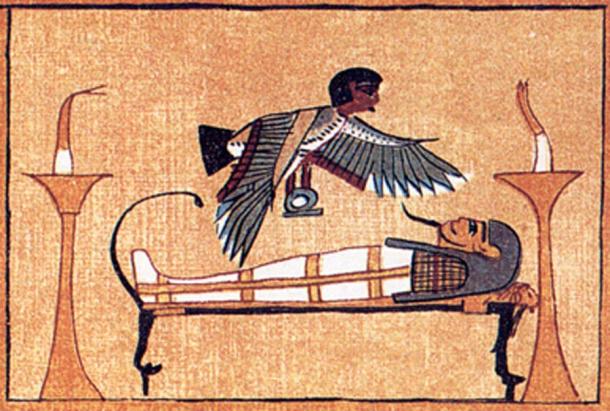
Ba, part of the human soul. Facsimile vignettes from the Book of the Dead.
The ancient Egyptians were given a name at birth hidden from all but the gods. This name was considered a very important and powerful part of the soul, which had the ability to destroy man and his soul forever. During his life, man was known only by a nickname, so that no one could learn his true Ren and thus gain his power or the knowledge needed to destroy her. As long as Ren existed, the soul had the strength to continue living. If embalming was properly completed and mummification was successful, Ren, that is, man and his soul, could exist forever.
A set of texts from around 350 AD called Breath book it contained the names of the ancient Egyptians, by writing them the scribes tried to ensure that their souls survived forever. The power of the name was emphasized by its inscription in the cartouche - the magical protective "circle" in which the name was written - used in the names of rulers. Preserving the name, like Ren's, was important for preserving the soul. The destruction of Ren was a way for the soul to be destroyed forever. This is also one of the reasons why the names of some hated characters, such as Akhenaten, were ritually destroyed and removed from monuments and texts after their death.
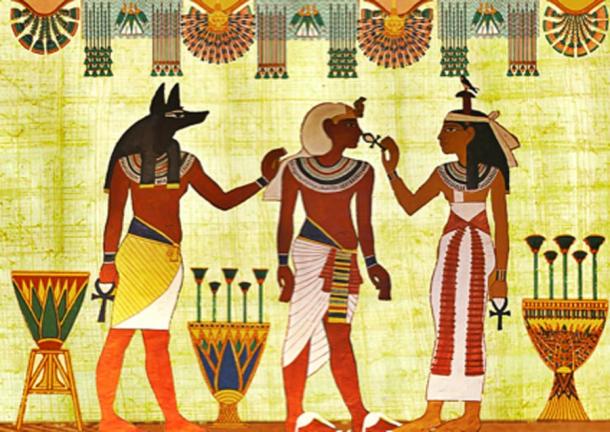
As long as Ren existed, the human soul survived.
Ka is the life essence of man, which makes the difference between life and death. According to the Egyptians, Ka gave birth to the fertility goddess Heket or the birth goddess Meschenet into her body during birth. Ka was what really brought the newborn to life and was maintained throughout her life through food and drink. She needed nutrition even after her death, so Chat was presented with drinks and food from which she could suck up nutrients in a supernatural way. However, she did not need the physical component of the food. A sacrificial bowl made of clay and shaped into a house, called the "house of the soul," was used to offer sacrifices to Ka. Some of the surviving specimens even contain food models and were used by experts to determine the appearance of a common ancient Egyptian dwelling.
Some people believe that the houses of the soul were directly the physical abode of Ka, although there is no evidence for this, and it seems much more likely that this was a sophisticated way of presenting food and drink offerings to the deceased.
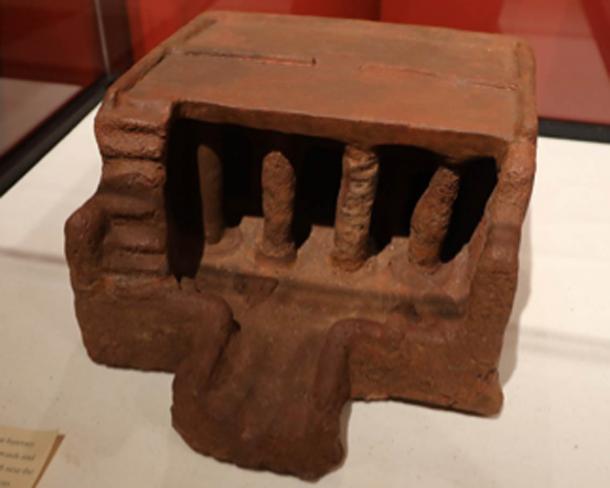
House of the soul
The ancient Egyptians believed that the shadow was part of the human soul. He was always present and, according to them, contained part of what made a person unique. As with other cultures, for the Egyptians, the shadow was associated in some way with death. Shut was a servant of Anubis, the Egyptian god of death and mummification. The depiction of Sut was in the form of a completely blackened human figure.
Some people had in their funeral equipment a "shadow box" in which Šut could live. The Egyptian Book of the Dead describes how the soul leaves the tomb in the form of a shadow during the day. This Sut is considered only a human shadow and is not a significant or destructive manifestation of the deceased in the physical world.
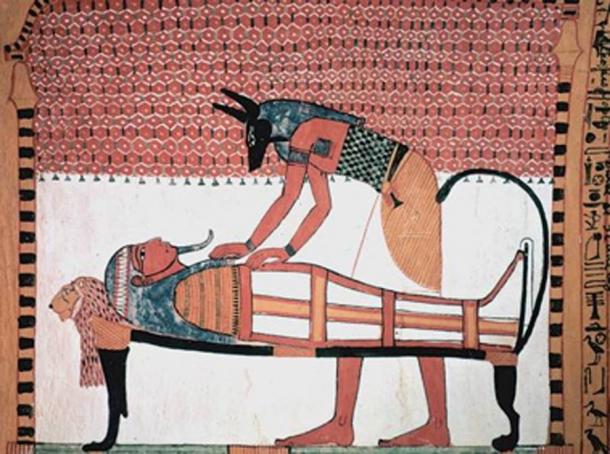
Anubis was an ancient Egyptian god associated with mummification and funeral rituals. Here he performs mummification.
The ancient Egyptians, like many people today , they understood the heart as the seat of human emotions. It was also the center of thought, will and intention. This means that for them, Ib (heart) was a very important part of the soul, and this word appears in many preserved ancient Egyptian sayings. While our conception understands the heart more as a metaphor, in ancient Egyptian sayings it means a real physical heart. As part of the soul, Ib was the part of the being that provided access to the afterlife. The heart was weighed against a pen - the pen of truth - and if the heart was heavier than the pen, man was not allowed to enter the afterlife and his heart was eaten by the demon Ammit, who is described as a creature composed of crocodiles, lions and hippos.
To preserve and protect Ib, the heart was embalmed in a special way and then stored together with the rest of the body and the heart scarab. This magical amulet provided protection against the heart revealing too much about the deceased, which could jeopardize the successful overcoming of the guardians entering the afterlife.
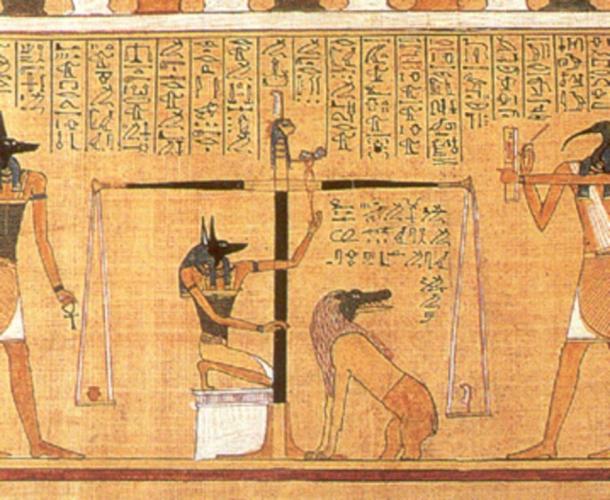
Dear Ib, human heart.
Ah was a magical combination of the elements Ba and Ka representing an enlightened immortal being. This magical union of Ba and Ka was possible only with the observance of the proper funeral rites. Oh, unlike other parts of the soul, it did not remain with Chat, but lived with the gods among the stars, although occasionally returning to the body if necessary. It represented the intellect, will and intention of man. Ah was also the part of the soul that kept in touch with the beloved survivors through their dreams.
Sahu was actually another aspect of Ah. As soon as the soul was found worthy of entering the afterlife, Sahu separated from the other parts. As in today's imaginations of ghosts, Sahu haunted those who hurt man and protected those he loved. Just as Ah could appear in dreams, so could Sahu appear to man. He is often considered a spirit seeking revenge and could be blamed for various misfortunes. There is even a letter from the Middle Kingdom that the widower left in the tomb of his deceased wife, in which she earnestly begged her Sahu to stop haunting him.
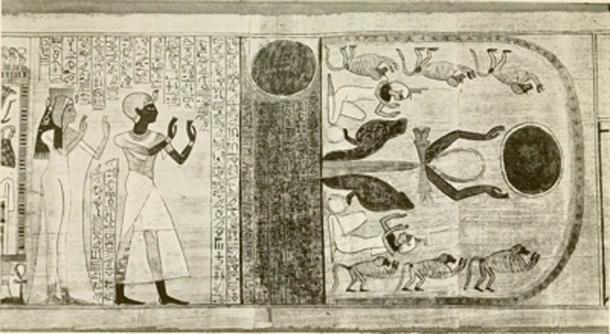
The fear of Sahu, a spirit-like part of the human soul, also appears in ancient Egyptian literature.
Sechem was another part of Ach. Not much is known about it, but it is considered a kind of life energy of the soul. After successfully passing the esteem of her heart and acknowledging her soul as worthy, Sechem resided in the realm of the dead. In the Book of the Dead, Sechem is described as a force and a place where the gods Horus and Osiris reside in the realm of the dead. Sechem could also be used to influence the environment and the results of human activities. Like Ah, Shechem did not dwell in Chat, the physical body, but among the stars along with the gods and goddesses.
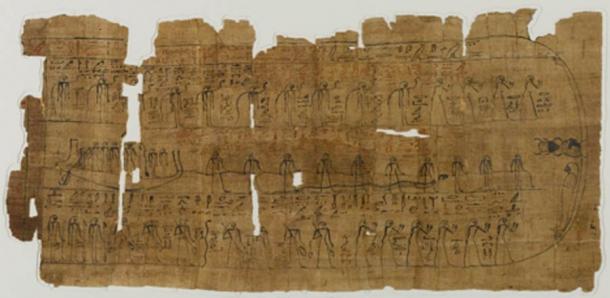
Letter from the Book of the Dead
The way the ancient Egyptians divided the soul shows how important it was to them. It must have been something they thought about in the smallest detail, and it represented the core of their belief in the afterlife and the way to achieve it. Their faith also determined the way they treated the body after death. Mummification, a typical manifestation of ancient Egyptian culture, was the result of their need to preserve the abode of the Chat and other parts of the soul.
Nine parts of the soul also influenced many aspects of Egyptian culture. The soul was at its center and manifested itself in many forms, from the violent removal of the names by which Ren was to be destroyed to the creation of literary works such as the Book of the Dead. Without this sophisticated system, a number of typical world-famous artifacts would not have arisen, thanks to which many people were captivated by this ancient culture.
This book invites you to look at fertility and conception in a new positive light. The problems causing this infertility epidemic are far greater than you might think. Holistic approach to fertility.
